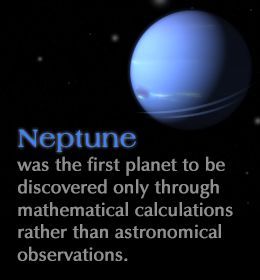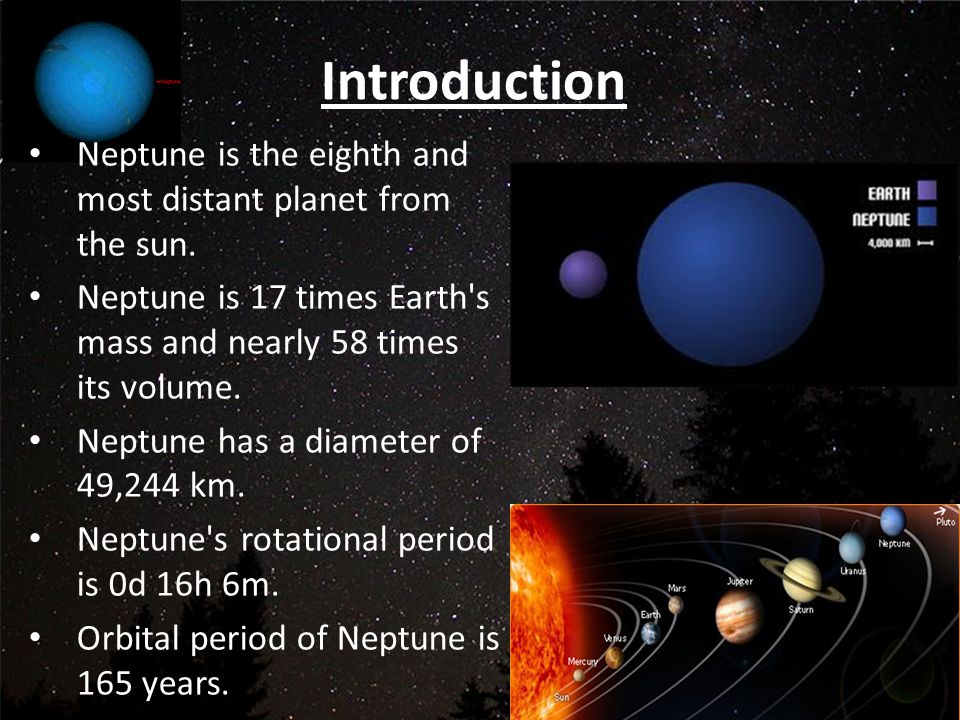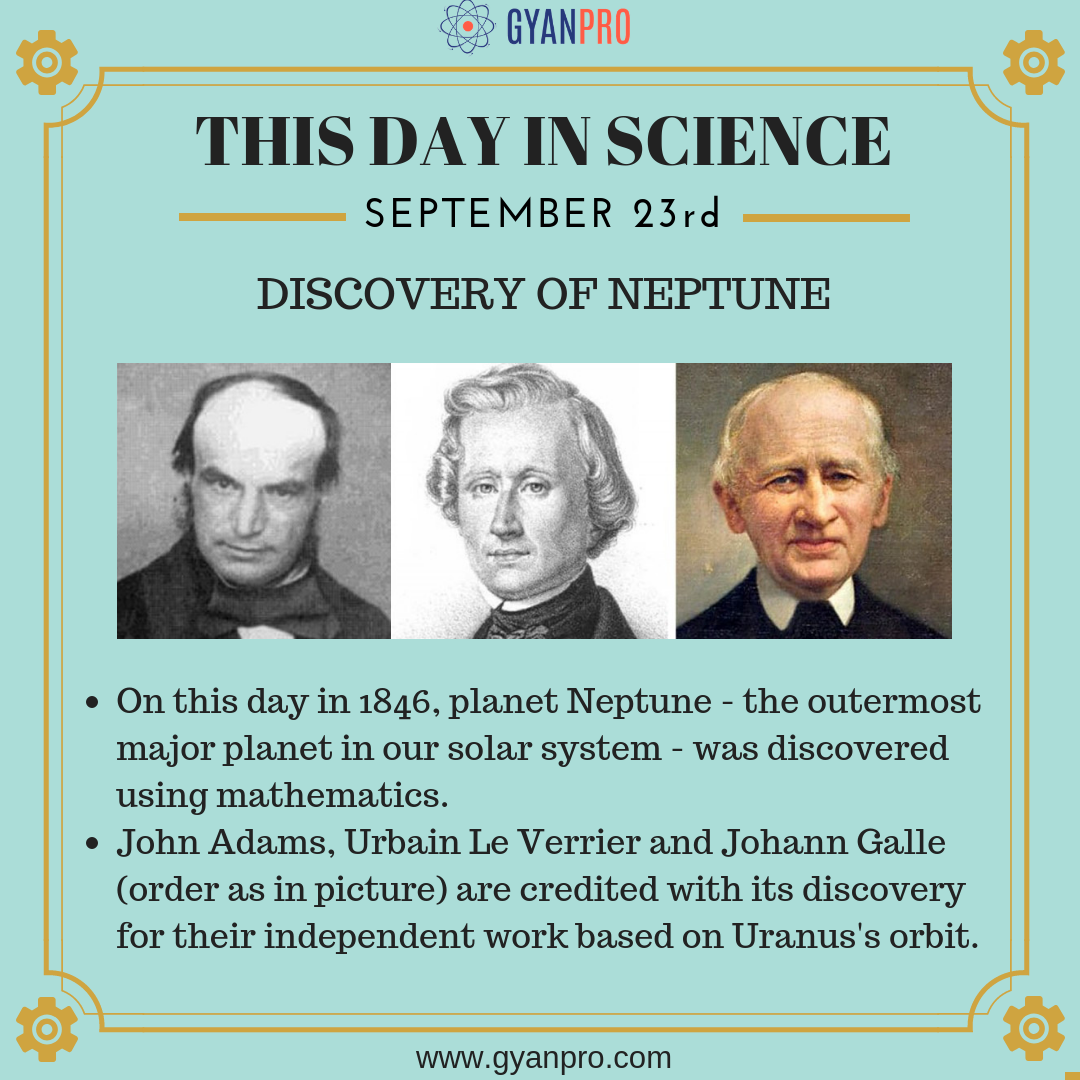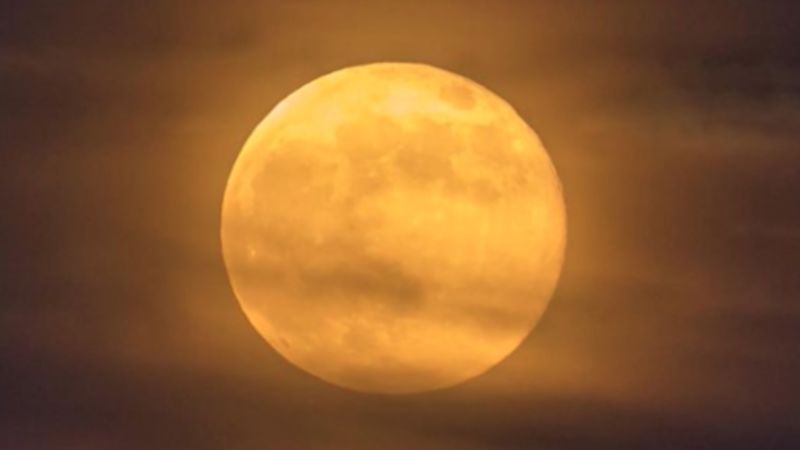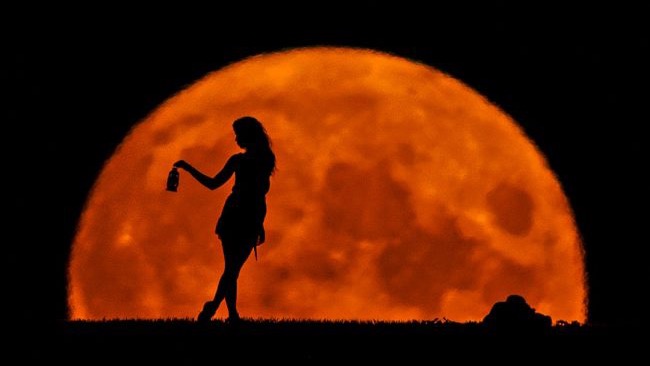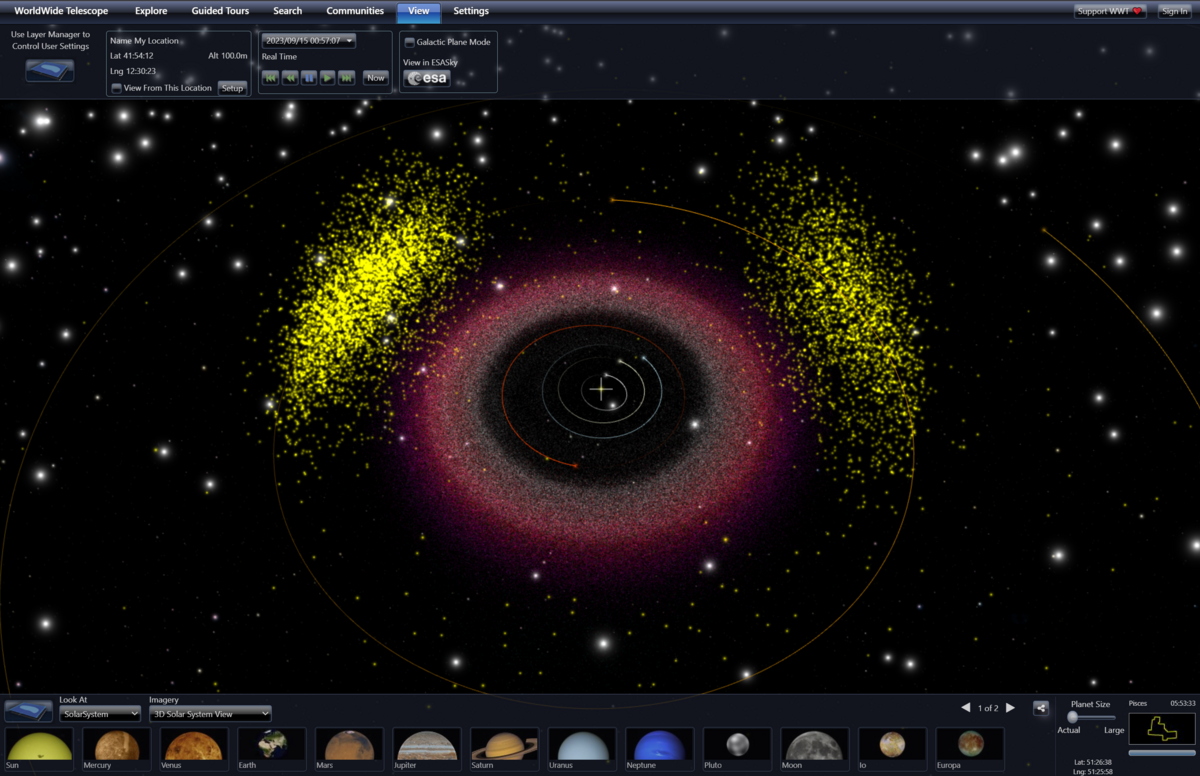Could have fit in the On this day thread but fits better here.
Neptune
1846 September 23
German astronomer Johann Gottfried Galle discovers the planet Neptune at the Berlin Observatory.
Neptune, generally the eighth planet from the sun, was postulated by the French astronomer Urbain-Jean-Joseph Le Verrier, who calculated the approximate location of the planet by studying gravity-induced disturbances in the motions of Uranus. On September 23, 1846, Le Verrier informed Galle of his findings, and the same night Galle and his assistant Heinrich Louis d’Arrest identified Neptune at their observatory in Berlin. Noting its movement relative to background stars over 24 hours confirmed that it was a planet.
The blue gas giant, which has a diameter four times that of Earth, was named for the Roman god of the sea. It has eight known moons, of which Triton is the largest, and a ring system containing three bright and two dim rings. It completes an orbit of the sun once every 165 years. In 1989, the U.S. planetary spacecraft
Voyager 2 was the first human spacecraft to visit Neptune.
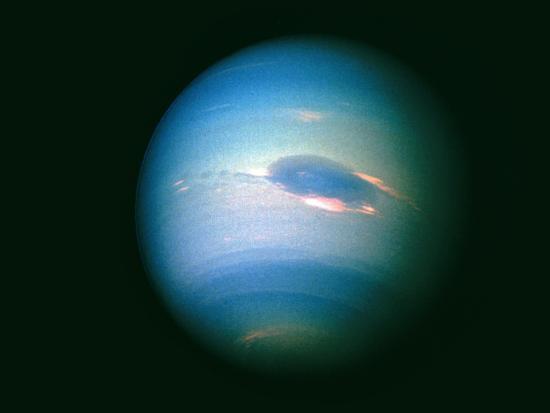
NASA
Confusingly,
Voyager 2 launched before Voyager 1, but followed a less direct course, and reached the inner solar system planets after its partner. Despite being outperformed by Voyager 1 early on, Voyager 2 has the distinction of being the only spacecraft to have imaged Uranus and Neptune. Voyager 2 reached Neptune in January, 1986, photographed the blue giant, and discovered eleven moons.
It took Voyager 2 three-and-a-half years to make its way from Uranus to large and icy Neptune, arriving for pictures in August 1989. Voyager 2’s photographs identified Neptune’s
Great Dark Spot, but observations from the Hubble Space Telescope
indicate the mysterious mark no longer exists. Without the ability to navigate to Pluto, NASA directed Voyager 2 to explore Neptune’s moon Triton, ending Voyager’s two planetary exploration.

